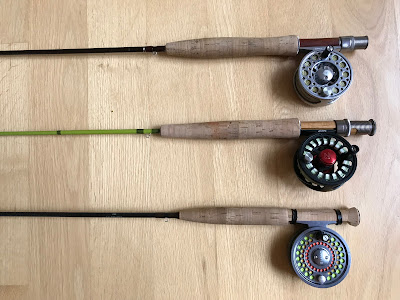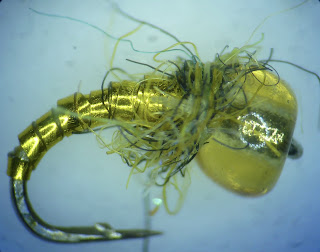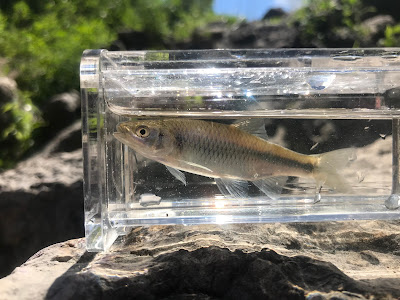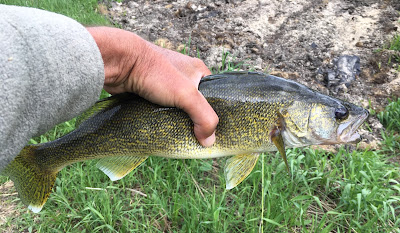For anyone starting out the answer is simple; use what you’ve got. If it’s an ultralight fly rod, say 3 wt or less, you’ve got a pretty good start. Heavier weight fly rods can work but bites will be less obvious and of course the fight will be greatly diminished. An option here is to go fixed line and use only a section of the rod without the handle, with a short section of leader and tippet tied to the tip eye. This setup would allow you to jig, dapp or do a lob cast.
 |
| The first fish caught on my Kiyotaki II |
Two upgrades or additions to the above would be a lighter fly rod or a tenkara rod.
My lightest western fly rods are a couple of 1 wts, a 7 1/2’ Orvis and a 6’ Maxcatch. I find them both adequate but wonder about something a bit lighter, down in the 0 to 000 range. Most of the rods in this range are quite expensive and I doubt the price would be worth any advantages you might gain. I haven’t fished any of these rods and may be wrong in my assessment. For reels, a click pawl fly reel is probably the best option although any cheap reel without a drag system would also work. I find the cheaper small reels with friction drags are too inaccurate and best avoided. Here are the three I use the most. The bottom rod is an Orvis 1 wt. and the second is a Maxcatch 1wt. The top rod is a Remington 2 wt for those windy days.
Tenkara rods are fixed line rods, generally used with a level, hi-viz fluorocarbon line and a piece of tippet. Their stated purpose is to facilitate a short drift with only the fly and tippet in the water followed by another quick cast. This is then repeated and in the proper conditions is an effective and rewarding way of fishing, generally in higher gradient streams for trout. In fishing for micros I have seldom used the rods in this fashion. I’ve mainly used them to jig along shorelines or perhaps lob or cast a small streamer for a short distance. Advantages are increased sensitivity and much more enjoyment out of the fight with smaller minnows. The top rod and third are better rods from Japan while the second and last are cheaper Chinese rods. They all work but my favorite is the third rod, a Kiyotaki II that weighs in at a crushing .6 oz.
Right now I find myself reaching for a 1 wt more often but I’m determined to integrate a few of my tenkara rods into my micro fishing pursuits. This is what works for me on the water types I fish but should evolve as I gain experience. Others in different situations might decide to use similar equipment differently or use entirely different tools. In many situations a slender, 5 foot willow branch with 2 lb test fishing line would work just as well.



















